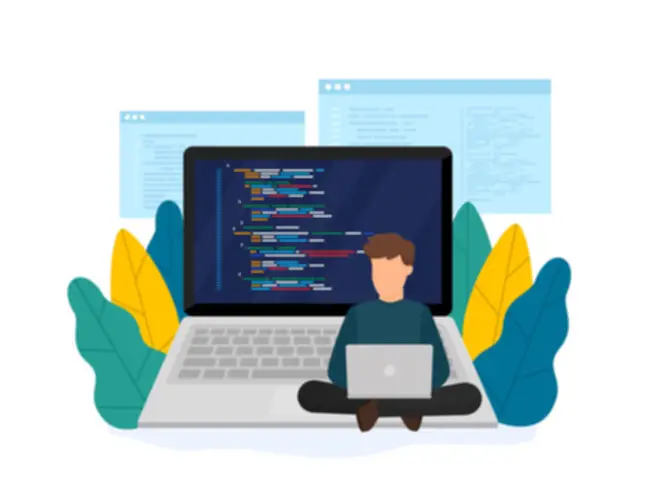Content
- Glassnode Expands ERC-20 Token Support: Pioneering On-Chain Analysis for the Ethereum Ecosystem
- Verify the inclusion constraint
- What does Proof of Reserves audit report includes?
- What’s the difference between an audit and an attestation?
- Bitcoin (BTC) vs Bitcoin Cash (BCH): Exploring the Differences in Origin, Use Cases, and Investment Potential
- Third-Party Accountants & Independent PoR
- What is Proof of Reserves & Why Is It Important for the Crypto Industry?
PoR is a crypto-native solution which, in my view, surpasses the level of assurance you get from traditional audits in a reserve context. If you were reinventing bank oversight from scratch, but this time it was possible to prove to depositors (rather than just state or federal supervisors) that banks literally had sufficient liquidity, wouldn’t you prioritize that? After all, all of this regulation is meant to be for the benefit of end users and depositors. To those who reject PoR because it’s not perfectly trustless in its current implementation, I would respond that https://www.xcritical.com/ the perfect is the enemy of the good. Those exchanges that are more stringently regulated, under the NY Trust License for instance, can credibly claim to be fair stewards of user funds. Some exchanges conduct financial statement audits to obtain bank partners, or as part of the normal course of business as public companies.
Glassnode Expands ERC-20 Token Support: Pioneering On-Chain Analysis for the Ethereum Ecosystem
PoR helps users ensure the security and trustworthiness of CEXs and other custodial crypto services. For modern PoR like the ones done by Derebit of BitMEX, the entire liability set is released, so there’s no real uncertainty around the completeness of liabilities. Any standard PoR is also user-verifiable, so presumably any user could blow the whistle if they found that mobile pow system their liability entry was understated. Today, most PoRs are done with the Merkle proof method where liabilities are only disclosed on a per-client basis, which creates more possibilities for liability hiding.
Verify the inclusion constraint
This type of proof of reserves in crypto involves exchanges publicly disclosing their wallet addresses, allowing anyone to verify the balance of funds held in those wallets. In addition to providing proof of reserves audit reports, some exchanges offer users the possibility to verify this information themselves. This can be done by making the exchange’s wallet addresses public and / or granting users access to Merkle data. Secondly, the addresses containing a platform’s reserves are not always publicly disclosed. So there is no way of verifying that the funds are still present after the audit is complete. Even if exchange addresses are published on Nansan.io, there is no way of verifying if those specific addresses were used to verify account ownership in the audit.
What does Proof of Reserves audit report includes?
But this is solved with next generation PoRs which rely on ZK proofs, making disclosure of the full liability set possible without privacy drawbacks. Newer cryptographic technologies have largely made this objection obsolete. In the meantime, investors’ best course of action is to check the PoR balance of any platform they are dealing with and store their crypto in non-custodial wallets. This allows market participants to make informed decisions about where to trade and ensures that everyone is playing by the same rules. Ultimately, PoR is essential to provide a safe and secure environment for the exchange of value in cryptocurrencies. Please note that an investment in digital assets carries risks in addition to the opportunities described above.
What’s the difference between an audit and an attestation?
With every layer of hashing, the number of data pieces (Merkle leaves), is exponentially reduced until a single hash (Merkle root) is left at the top of the Merkle tree. With Bitcoin and other cryptocurrencies, all the transactions inside a block are summarised in a Merkle tree by producing a digital fingerprint of the entire set of transactions. The auditors then use the data from this verified wallet to form a part of their report.
Bitcoin (BTC) vs Bitcoin Cash (BCH): Exploring the Differences in Origin, Use Cases, and Investment Potential
Since our launch in 2018, dYdX has never lost or put users’ funds at risk, and we consistently publish open-source third-party code audits with the firms PeckShield and Zeppelin Solutions. Furthermore, there’s no need to solely rely on proof of reserves because you can audit the dYdX smart contract in real time by visiting Etherscan. This allows you to see exactly how much and where all funds are on dYdX in real time. For more details on dYdX’s latest features and security measures, visit our blog. Also, remember to check out dYdX Academy for more helpful tips on Web3 safety, including how to use a hardware wallet, how to transfer cryptocurrencies, and the common warning signs of scams.
Third-Party Accountants & Independent PoR
Our existing suite of Exchange Balance metrics are the result of these sophisticated data acquisition systems, which use a combination of publicly available information, clustering algorithms, and exchange-specific heuristics. Smart contract developers can integrate Chainlink Proof of Reserve as a circuit breaker to help ensure unexpected fractional reserve activity from issuers does not result in cascading user losses if unbacked tokens are minted. If there’s a single thing I could do to better this industry, it would be to convince every custodial service provider in the cryptocurrency space to adopt a routine Proof of Reserve program. You’ll work with a dedicated team and customer success manager who will help with implementation to improve data security and compliance in your company. All data is secured and stored safely by a tier-1 Web3 cybersecurity auditor.
Why Is Proof of Reserves (PoR) in Demand After FTX Collapse?
The recent collapse of FTX and the bankruptcy of crypto lender Celsius highlight the importance of verifying that the crypto custodians manage the funds responsibly. Proof of Work (PoW) is a method that cryptocurrency networks use to verify and validate transactions in a blockchain. This article does not constitute investment advice, nor is it an offer or invitation to purchase any digital assets. They provide a single hash for a large set of data, ensuring that none of the included data has been tampered with. Anytime you trust a 3rd party with your assets, you introduce a point of failure. Exchanges can prove ownership of these specific wallets simply by signing a transaction.
- Yes, PoR doesn’t fix this kind of issue (no one has ever claimed it is a panacea).
- If users don’t have faith that their funds are secure and readily available, it’s difficult to imagine a future for these services.
- This way, if just one transaction is modified, the hash will change – not just for that specific node – but also its parent and grandparent nodes, all the way up to the Merkle root.
- In a nutshell, a third-party audit involves hiring an external, reputable auditing firm to conduct a thorough examination of a company’s financial records and assets.
- However in more complex setups where it may be a fractional reserve model or more bank-like context, or with multiple assets and even non-blockchain assets and potentially fiat, you will want to incorporate an auditor.
- PoR analysis is crucial in building trust between customers and the exchange.
What is Proof of Reserves & Why Is It Important for the Crypto Industry?
Additionally, a regulatory compulsion to use PoR domestically would create a market for more and better technical tools and CPA firms to oversee the attestations, making it more convenient for offshore exchanges to engage in PoR. PoR is most useful for exchanges where traditional assurances don’t exist. There are many of these, so standardizing PoR and encouraging CPA firms to cover them would improve the overall credibility of these exchanges, even if offshore. Proving liabilities is tricky, and generally requires an auditor to engage in a full assessment.
The stunning collapse of crypto exchange FTX near the end of 2022 sent shockwaves through the crypto industry, rattling trust and pushing asset prices into freefall. The events ignited conversations about the security of users’ crypto, and widespread concern over whether they could trust their holdings in the hands of custodial wallets and exchanges. The proof of reserves audit involves an independent third party reviewing and verifying the financial records and holdings of a financial institution. The process typically starts with the institution providing detailed documentation of its assets. The auditor then conducts a thorough examination to ensure that the reported holdings match the actual funds or assets held by the institution. Once the audit is complete, the auditor issues a report confirming the institution’s solvency and compliance with reserve requirements.
This phase focuses on the exchange’s assets, or the cryptocurrencies held on the blockchain. The sum of crypto address balances is calculated if the exchange has control over the private keys of those addresses. Independent accountants check the platform or lender has enough assets to cover all liabilities, such as customer balances, at a certain point in time. Smaller institutions may find it challenging to bear the financial burden of frequent audits, making it more difficult to provide continuous and up-to-date proof of reserves. Regular and thorough audits are necessary to ensure that the claimed reserves match the actual funds held by the institution. However, conducting these audits frequently can be expensive and time-consuming.
Although proof of reserves offers assurance that a crypto company has the assets in place to cover its liabilities, it is only a single snapshot in time, not a live accounting of balances over time. It also only shows the on-chain assets of the custodian; it does not track where those assets come from (i.e., whether the assets were borrowed for the purposes of the audit). To verify individual account balances without the danger of exposing personal or sensitive information, a proof of reserves audit uses a data structure called a Merkle tree. Without getting too technical, this data structure is a way of validating information, whilst obscuring its sensitive contents. The main idea of the audit is to verify that platforms actually have the funds they claim to have, therefore reassuring users that their funds are in safe hands. In the context of what is proof of reserves, cryptographic proofs are used to ensure that the account balances in the Merkle Tree are accurate and that they correspond to the actual funds held by the organization.
In a bid for enhanced transparency, and in an attempt to counter practices of fractional reserves, many exchanges have started a process of self-reporting their crypto reserves. The industry commonly refers to this practice as “Proof-of-Reserves”, which involves the verifiable disclosure of both reserves held (on-chain), and matched liabilities (both on- and off-chain). Moreover, PoR checks promote stability within the cryptocurrency industry.


